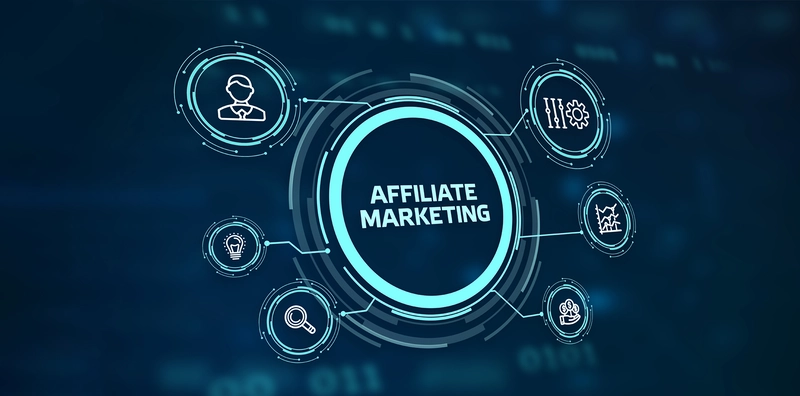Quick Links
One of the best ways to express yourself, share your knowledge, and interact with a global audience is to start a blog or YouTube channel. But these platforms provide actual chances to make money in addition to encouraging innovation and connecting users. But effectively monetising content calls for careful preparation, diligence, and adherence to rules, especially if you wish to use networks like Google AdSense.
This tutorial offers a thorough rundown on how to monetise YouTube channels and blogs while optimising your earnings potential and adhering to restrictions such as Google AdSense.
Monetizing a Blog
Blogs are flexible platforms that let people or companies write about everything from personal experiences to specialised knowledge in areas like technology, fashion, or business. Here’s how to make a blog a reliable source of income:
Google AdSense
One of the most well-liked and simple methods for making money from a blog is through Google AdSense. It enables you to run advertisements on your blog and get paid when visitors see or click on such adverts.
Steps to Implement Google AdSense:
- Register for AdSense: First, set up an account with AdSense and connect it to your blog.
- Content Guidelines: AdSense content regulations must be followed by your blog; so, no offensive, violent, or dangerous content is allowed. Continue with insightful, unique, and user-focused content.
- Select Ad Placement: AdSense gives you the option to show, text, and video advertising, among other ad types. To maximise revenue, try various positions (headers, sidebars, and in-content advertisements).
Best Practices for AdSense Optimization:
- Concentrate on producing top-notch content that appeals to your intended audience. Google gives priority to blogs with interesting and useful content.
- Make sure the layout of your blog is clear and simple to use; cluttered designs might worsen user experience and lower ad engagement.
- Keep in mind that having too many adverts on your blog might detract from the user experience and lower your site’s search engine rankings.
Affiliate Marketing
By advertising the goods and services of others, you can earn commissions through affiliate marketing, which is a potent source of revenue. Because you can easily incorporate affiliate links into your content without detracting from the user experience, it’s perfect for blogs.

How It Works:
- You sign up for affiliate networks (like ShareASale, CJ Affiliate, or Amazon Associates).
- You get exclusive affiliate links to the goods you blog about and suggest.
- You receive a commission if people click on these links and buy something.
Best Practices for Affiliate Marketing:
- Select goods and services that your target market will find useful. A fashion blog might concentrate on clothes and accessories, whereas a tech site might suggest devices.
- Tell your readers the truth about affiliate links. In order to uphold trust, you are required by numerous programs and regulatory laws to disclose affiliate affiliations.
- Prioritise building enduring relationships with companies who have the same values as your site and make sure the goods you endorse actually help your readers.
Sponsored Posts and Product Reviews
You can start making money off of your blog by offering sponsored posts or product reviews if it starts to gain popularity and a consistent readership. You might get paid by brands to produce posts that highlight their goods or services.
How to Get Sponsored Opportunities:
- Make contact with businesses in your niche and offer to write product reviews or service articles.
- A large number of brands search for blogs that have a sizable readership and a high interaction rate. The number of followers on your email list, social media presence, and blog can all affect your ability to secure sponsorship arrangements.
Best Practices for Sponsored Content:
- In order to abide by advertising regulations and foster audience confidence, you should always declare sponsored posts.
- Make sure the sponsored content is worthwhile and pertinent. To keep readers interested, sponsored posts should be of the same calibre as your other content.
- To avoid alienating your visitors, don’t overdo sponsored content on your blog. Strike a balance.
Marketing Digital Goods
Blogs can be used as online stores where digital goods with steady income sources can be sold. There are many possibilities available, ranging from e-books and online courses to printables and design templates.
Popular Digital Products to Sell:
- E-books: Provide your expertise on a certain topic in a format that is simple to download.
- Online courses: Give your readers a skill or piece of knowledge related to the area of your site, like writing, digital marketing, or photography.
- Templates and Tools: Provide your audience with tools or design resources, such as website themes, resume designs, or budgeting templates, to help them with their duties.
Benefits of Selling Digital Products:
- Scalability: Digital products can be marketed eternally and require little maintenance once they are developed.
- High Profit Margins: The majority of sales of digital products go directly to your profit because there is no need for inventory or transportation.
Membership Sites and Paid Subscriptions
Offering premium memberships or paid subscriptions can be a profitable strategy to monetise your blog if you have a loyal readership. Exclusive access to community forums, premium content, and tailored guidance are all included with these memberships.
Types of Membership Content:
- Exclusive Articles: Offer in-depth, members-only information on particular subjects.
- Webinars and Workshops: Provide engaging, instructional sessions exclusively to members who have made a payment.
- Community Access: Establish a closed group in which participants can communicate with one another and get one-on-one coaching or guidance.
Adding subscription models to your blog is simple with platforms like MemberPress, Substack, and Patreon.
Monetizing a YouTube Channel
With countless options for monetisation, YouTube has developed into a huge platform for content creators. YouTube offers a variety of revenue streams that can help you turn your passion into a living, regardless of your profession—vlogging, teaching, gaming, or product reviews.

Google AdSense and YouTube Partner Program
You must first sign up for the YouTube Partner Program (YPP) in order to monetarily support your YouTube channel by earning money from Google AdSense advertisements.
Requirements to Join YPP:
- In the previous 12 months, you have to have at least 1,000 subscribers and 4,000 view hours.
- You have to abide by all YouTube monetisation guidelines, which include staying away from clickbait, improper content, and deceptive thumbnails.
- For your channel to continue to be eligible, it must follow community guidelines.
After approval, you can begin to show advertisements in your videos. Your earnings increase with the number of views and interactions your material receives.
Best Practices for AdSense on YouTube:
- Make films that are eight minutes or longer because you may add mid-roll advertisements to them, which can boost your revenue.
- Pay attention to content with a high CPM (cost per mille): CPM tells you how much an advertiser pays for 1,000 impressions. Advertisers willing to pay more for content in categories like education, tech, and finance are common.
Channel Memberships and Super Chats
With the help of special monetisation tools like Super Chats and channel memberships, your audience may directly support you financially on YouTube.
Channel Memberships:
- To subscribers who pay a monthly subscription, you can give members-only benefits like badges, emoticons, and access to special material.
- Offer exclusive behind-the-scenes content, early access to videos, or exclusive live streams to interact with your members.
Super Chats:
- Super Chats allow visitors to pay to highlight their messages throughout your live feeds.
- This is a terrific method to enhance engagement during live events while offering followers with an opportunity to support your channel financially.
Best Practices:
- Ensure that you give substantial advantages to members, as this will entice more viewers to subscribe.
- Promote memberships throughout your films, live streams, and on social media platforms to promote conversions.
Affiliate Marketing on YouTube
Just as with blogs, affiliate marketing is a great method to monetise a YouTube channel. You can get paid commissions when viewers make purchases using your referral links by endorsing products in your videos and putting affiliate links in the description of your films.
How to Get Started:
- Enrol in affiliate networks such as Rakuten Marketing, Impact, or Amazon Associates.
- Make instructional, recommendation, or product review videos that highlight the goods you’re trying to sell.
- Incorporate affiliate links into the descriptions of your videos, and urge viewers to click on them.
Tip from AutoEarn: In order to keep your credibility and trust, be open and honest with your readers about affiliate connections.
Sponsored Videos
As your YouTube channel gains popularity, you can receive requests from brands to participate in sponsored videos. A brand pays you to produce material that advertises its goods or services when you work on a sponsored video.
How Sponsored Videos Work:
- Companies will pay you a fee if you make a video that features their good or service.
- While some sponsorship agreements have a fixed cost, others could have affiliate connections with commission-based pay.
Best Practices for Sponsored Content:
- Accept sponsorships from companies only if they share the same values and target demographic as your channel.
- To abide with FTC regulations and uphold honesty with your audience, you should always declare sponsored films.
Merchandise Shelf
YouTube’s product shelf lets you sell branded goods straight through your channel if you have a loyal fan base. With websites like Teespring or Spreadshop, you can design personalised t-shirts, sweatshirts, caps, and more.

How to Use Merchandise Shelf
Through YouTube’s retail shelf, creators may make an additional source of income by selling branded goods directly to their audience. Once your channel satisfies the requirements for eligibility—typically having 10,000+ subscribers—this will become available.
Steps to Implement Merchandise Shelf:
- Establish an online store on sites such as Teespring, Spreadshop, or Merchbar, selling items such as caps, t-shirts, mugs, and stickers with your logo or brand.
- Connect your store to YouTube so that the products show up right below your videos.
- Encourage viewers to buy your stuff by mentioning the merchandise in videos and giving design improvements.
Tip from AutoEarn: Make sure your stuff is well-designed and of the highest calibre to appeal to your target market. Merchandise need to represent your company and have a local connection.
YouTube Premium Revenue
A percentage of the monthly subscription cost paid by YouTube Premium users, who access content without advertisements, is donated to the creators of the videos they view. Your revenue will increase as more premium members view your content.
How to Maximize Premium Earnings:
- Focus on making entertaining, high-quality videos that hold audience interest.
- More watch time on longer videos or playlists might increase your revenue from YouTube Premium subscribers.
Crowdfunding and Fan Support
Platforms like Patreon, Ko-fi, or Buy Me a Coffee let fans to support creators with one-time or monthly donations, which is beneficial for YouTubers who have devoted followings. Creators give away special material or benefits in return.
How to Implement Crowdfunding:
- Make a page on a crowdsourcing website and specify exactly what supporters will get in return (such as early access to films, first access to content, and behind-the-scenes looks).
- In order to encourage people to support your effort, mention your crowdfunding page in the description or at the conclusion of your videos.
Tip from AutoEarn: Stay consistent with your awards and bonuses to keep supporters engaged and feeling valued.
Building a Sustainable Monetization Strategy
A blog or YouTube channel can be made profitable by combining affiliate marketing, sponsored content, advertising, and other methods. The secret to success is producing top-notch material that appeals to your audience and complies with policies set forth by websites like Google AdSense.
A varied approach—combining several monetisation strategies—will help you optimise your revenue and reach financial success in 2024 and beyond, regardless of whether you’re just starting out or trying to scale your income.
Tip from AutoEarn: Prioritise giving your audience something of value, maintaining consistency in your content, and being open and honest about how you monetise it. As your blog or YouTube channel gains popularity, the benefits of your labour will become apparent.For more content like this visit for online earning blogs visit autoearn or visit our facebook page.
How to get monetized on YouTube in 2024?
500 subscribers. AND.
Three public videos uploaded in the past 90 days. AND.
3,000 hours of watch time across all your videos over the last 12 months. OR.
3 million Shorts views in the last 90 days
Is it better to start a YouTube channel or a blog?
A YouTube channel may be more profitable in the short term. However, remember that a blog will boost your website’s SEO, while a YouTube channel will gain subscribers — but will only benefit YouTube’s SEO. If your business model depends on SEO, then a blog might be a more profitable long-term solution.
Which is more profitable, blogging or YouTube?
Both blogs and youtube channels have the potential to generate profit but it all depends how successfully each one is run. Youtubers tend to be more vocal about their earnings, giving the impression that they earn more but it really varies depending on the niche and blogger or Youtuber involved.




